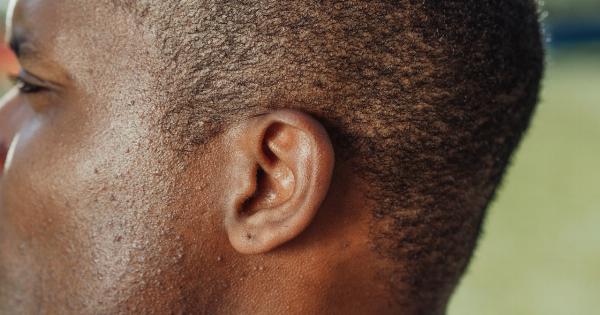Earwax, also known as cerumen, is a natural substance produced by the ear canal to protect it from dirt and bacteria. It also helps to lubricate the ear canal and prevent dryness.
However, sometimes the earwax can build up and cause problems such as hearing loss, dizziness, and ringing in the ears. Consequently, many people try to remove earwax at home, which can be dangerous if not done properly. This is why cotton swabs are not the answer.
Dangers of Using Cotton Swabs
Cotton swabs are a popular tool for cleaning ears, but they can actually cause more harm than good. Here are some of the dangers of using cotton swabs for earwax removal:.
1. Pushing Earwax Deeper
The most common problem with using cotton swabs is that they can push earwax deeper into the ear canal. This can cause the earwax to become impacted, which can lead to hearing loss, pain, and infection.
Moreover, trying to remove the impacted earwax at home can be difficult and often requires professional help.
2. Damaging the Eardrum
Another danger of using cotton swabs is that they can damage the eardrum. The eardrum is a thin membrane that separates the ear canal from the middle ear. If it gets damaged, it can cause hearing loss, dizziness, and ringing in the ears.
Moreover, the eardrum can be very sensitive, so even a minor injury can lead to significant problems.
3. Introducing Germs into the Ear
Cotton swabs can also introduce germs into the ear canal, which can cause infection. The ear canal is a warm and moist environment that is ideal for bacterial growth.
If the bacteria gets into the ear canal, it can cause inflammation and infection, which can be difficult to treat.
4. Irritating the Ear Canal
Moreover, the ear canal is a very delicate and sensitive area. Cotton swabs can irritate the skin in the ear canal, causing inflammation and discomfort. This can lead to pain, itching, and even bleeding in some cases.
Alternative Earwax Removal Methods
If cotton swabs are not the answer, what are the alternative methods for earwax removal? Here are some safe and effective ways to remove earwax at home:.
1. Use Ear Drops
Ear drops are a safe and effective way to soften and remove earwax. These drops contain ingredients that loosen the earwax, making it easier to remove naturally.
You can buy ear drops at your local drugstore or make your own using a mixture of hydrogen peroxide and water.
2. Rinse with Warm Water
Another safe way to remove earwax is to rinse your ear with warm water. Fill a bulb syringe with warm water, tilt your head to one side, and gently squirt the water into the ear canal. This will help wash out the earwax and any debris in the ear canal.
However, make sure the water is not too hot, as this can damage the eardrum.
3. Use a Earwax Removal Kit
Earwax removal kits are available at most drugstores and contain everything you need to remove earwax safely at home. These kits usually include ear drops, a bulb syringe, and instructions on how to use the kit.
They are safe and effective when used properly and can help you avoid the dangers of using cotton swabs.
When to Seek Professional Help
While it is possible to remove earwax at home, there are some situations where you should seek professional help. Here are some signs that you should see a doctor for earwax removal:.
1. Severe Pain or Discomfort
If you experience severe pain or discomfort when trying to remove earwax at home, you should stop immediately and see a doctor. This could be a sign of an ear infection or a more serious problem such as a ruptured eardrum.
2. Ringing or Buzzing in the Ears
If you hear ringing or buzzing in your ears, you could have a condition called tinnitus. This can be caused by a variety of factors, including excess earwax. A doctor can help you determine the cause of your tinnitus and provide appropriate treatment.
3. Hearing Loss
If you experience sudden hearing loss, you should see a doctor immediately. This could be a sign of a more serious problem such as a tumor or an infection that requires prompt treatment.
Conclusion
Earwax removal is a necessary part of ear care, but it is important to do it safely and effectively. Cotton swabs are not the answer, as they can cause more harm than good.
Instead, consider using ear drops, rinsing with warm water, or using an earwax removal kit. However, if you experience any pain, discomfort, or hearing loss, make sure to seek professional help immediately.





























